The Day After Tomorrow
5.2 /10 1 Votes
45% Rotten Tomatoes Featured song More than a Million Miles Duration Language English | 6.4/10 IMDb 47% Metacritic Genre Action, Adventure, Sci-Fi Budget 175 million USD Country United States | |||||||||||||||||||||||||||||||||
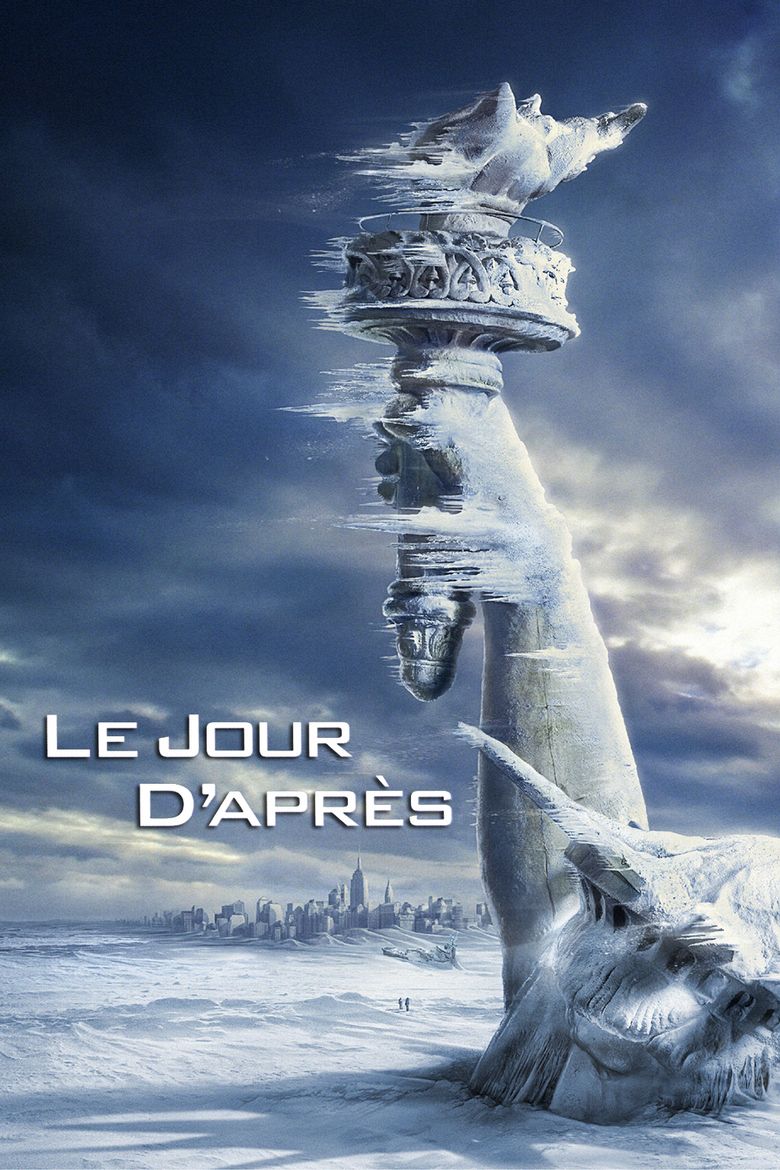 | ||||||||||||||||||||||||||||||||||
Release date May 24, 2004 (2004-05-24) (New York City premiere)May 26, 2004 (2004-05-26) (United States) Cast (Jack Hall), (Sam Hall), (Laura Chapman), (Jason Evans), (Frank Harris), (Dr. Lucy Hall) Similar movies Terminator Salvation , Indiana Jones and the Last Crusade , Armageddon , Changeling , Into the Storm , Sharknado Tagline Where will you be? | ||||||||||||||||||||||||||||||||||
The day after tomorrow official trailer hd
The Day After Tomorrow is a 2004 American science-fiction disaster film co-written, directed, and produced by Roland Emmerich and starring Dennis Quaid, Jake Gyllenhaal, Ian Holm, Emmy Rossum, and Sela Ward. The film depicts catastrophic climatic effects following the disruption of the North Atlantic Ocean circulation in a series of extreme weather events that usher in global cooling and lead to a new ice age. Filmed in Toronto and Montreal, it is the highest-grossing Hollywood film made in Canada (adjusted for inflation).
Contents
- The day after tomorrow official trailer hd
- The day after tomorrow 1 5 movie clip tornadoes destroy hollywood 2004 hd
- Plot
- Production
- Visual effects
- Box office
- Critical reaction
- Political and scientific criticism
- Home media
- References
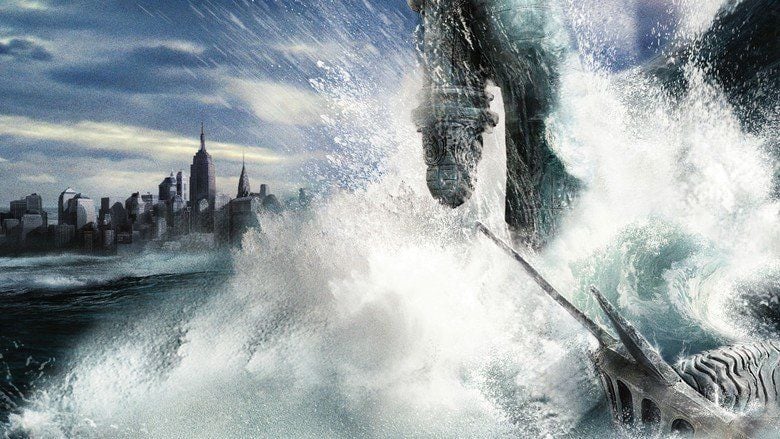
Originally slated for release in the summer of 2003, The Day After Tomorrow opened in Mexico City on May 17, 2004, and was released worldwide from May 26 to May 28 (except in South Korea and Japan, where it was released on June 4 and 5). A major commercial success, the film became the sixth highest-grossing film of 2004. It received mixed reviews upon release, with critics highly praising the film's special effects but criticizing numerous scientific inaccuracies.
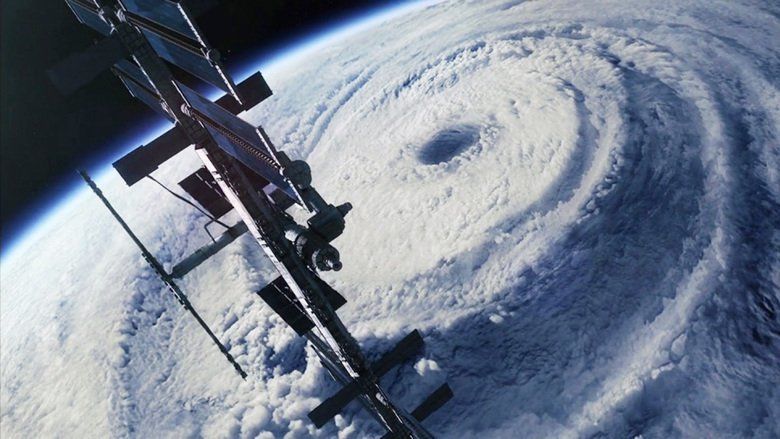
The day after tomorrow 1 5 movie clip tornadoes destroy hollywood 2004 hd
Plot
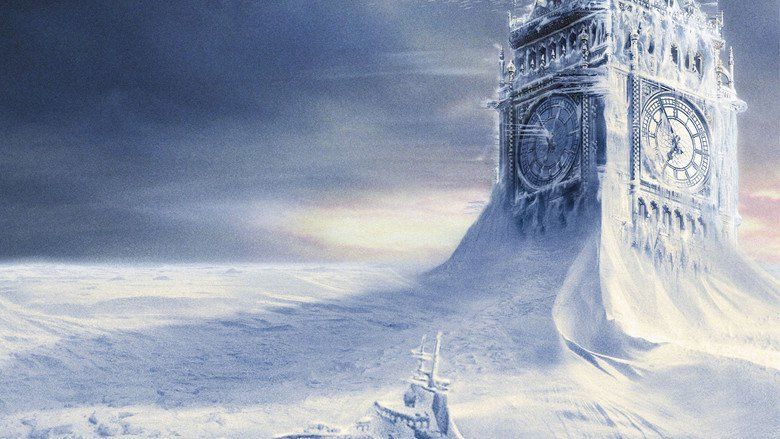
Jack Hall, an American paleoclimatologist, and his colleagues Frank and Jason, drill for ice-core samples in the Larsen Ice Shelf for the NOAA, when the shelf breaks apart. Jack warns of global warming to a UN conference in New Delhi, but US Vice President Raymond Becker dismisses his concerns. Professor Terry Rapson of the Hedland Centre in Scotland shares Jack’s views of an inevitable climate shift and they become friends. Several buoys in the Atlantic Ocean show a severe ocean temperature drop, Rapson concluding Jack’s theories are correct. Jack and Rapson’s teams, along with NASA meteorologist Janet Tokada, build a forecast model based on Jack’s research.
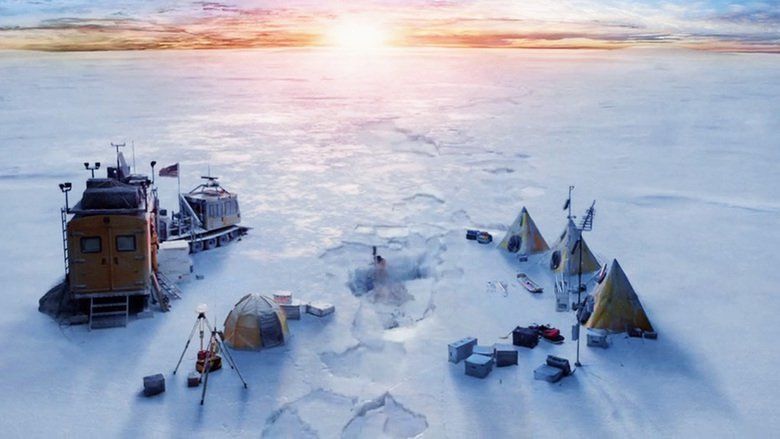
Eventually, a storm system forms in the northern hemisphere develop, splitting into three superstorms above Canada, Scotland, and Siberia. The subzero temperatures of the superstorms' eyes cause flash freezing. Meanwhile, the weather becomes increasingly bad around the world, Tokyo is struck by a giant hail storm and Los Angeles and Hollywood are devastated by a tornado outbreak.

In Manhattan, Jack’s son Sam, and his friends Brian, J.D., and Laura Chapman participate in an academic decathlon. The city begins to flood with rainfall, followed by an enormous storm surge, trapping Sam’s group in the New York Public Library. Sam contacts Jack and his mother Lucy, a doctor, Jack advising him to stay inside, and promises to rescue him. Rapson and his team perish in the European storm, while Lucy remains in a hospital caring for bed-ridden children, until saved by the authorities.
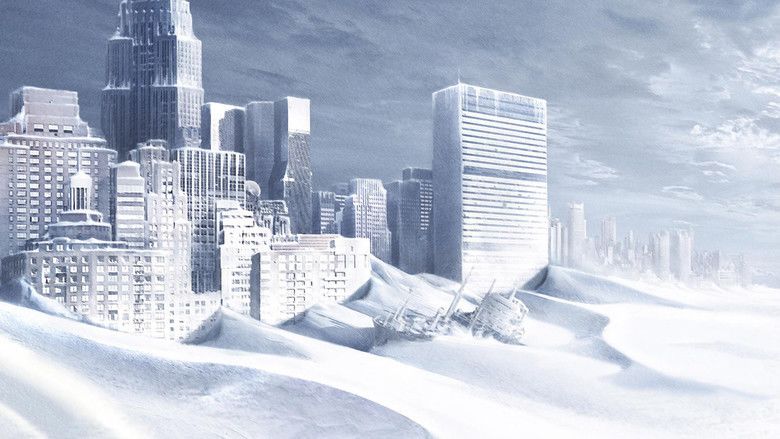
Upon Jack’s suggestion, US President Blake orders the southern states to be evacuated into Mexico, the northern half doomed to be hit by the superstorm. Blake is caught in it and dies, making Becker the new President. Jack, Jason, and Frank make their way Manhattan, but Frank falls through the skylight of a mall, cutting his rope to prevent his friends from falling in after him. In the library, most survivors decide to head south against Sam’s warnings, and later freeze to death. Sam, his friends, and other likeminded survivors remain inside, burning books to stay warm.
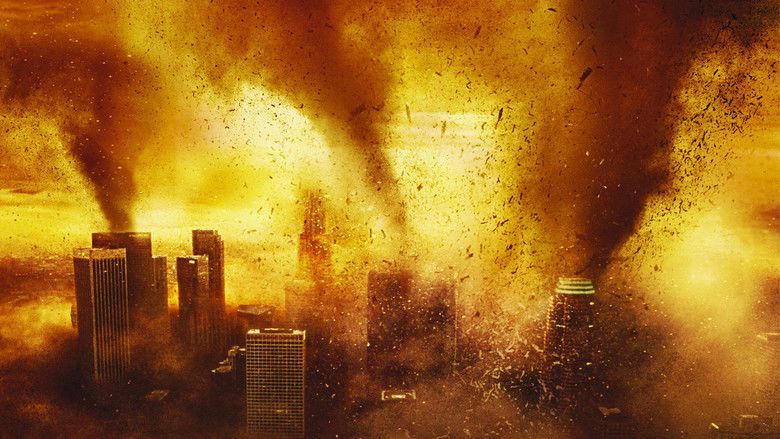
Lauren, wounded during the flooding, develops blood poisoning from her injury. Sam, Brian, and J.D. search a Russian cargo vessel, that drifted into the city, for penicillin. They encounter a pack of wolves which escaped from Central Park Zoo. The eye of the North American storm arrives, freezing Manhattan, but Sam’s group escape into the library just in time. Jack and Jason also survive it. Days later, the superstorms dissipate. Jack and Jason reach the library, discovering Sam and the others have survived.

Becker, in his first address as President, apologises on television for his ignorance, vowing to send helicopters to rescue survivors in the northern states. Jack and Sam’s group are picked up in Manhattan, where many people have survived. On the International Space Station, astronauts look down in awe at the frozen Earth, now free of pollution.
Production
The Day After Tomorrow was inspired by Coast to Coast AM talk-radio host Art Bell and Whitley Strieber's book, The Coming Global Superstorm, and Strieber wrote the film's novelization. Arnold Federbush's 1978 novel, Ice!, and Douglas Orgill and John Gribbin's The Sixth Winter (published in 1979) have similar themes. Before and during the film's release, members of environmental and political advocacy groups distributed pamphlets to moviegoers describing the possible effects of global warming. Although the film depicts effects of global warming predicted by scientists (such as rising sea levels, more destructive storms, and disruption of ocean currents and weather patterns), it depicts their occurrence more rapidly and severely than what is considered scientifically plausible; the theory that a superstorm could create rapid worldwide climate change does not appear in the scientific literature.
To choose a studio, writer Michael Wimer created an auction. A copy of the script was sent to all major studios along with a term sheet. They had 24 hours to decide whether to produce the movie with Roland Emmerich directing. Fox Studios was the only studio to accept the terms.
Visual effects
The Day After Tomorrow is well-known for its special effects and CGI. The movie features 416 visual effects shots, with nine effects houses and over 1,000 artists working on the film for over a year to bring its disaster sequences to life.
Box office
The film ranked #2 at the box office (behind Shrek 2) over its four-day Memorial Day opening, grossing $85,807,341. led the per-theater average, with a four-day average of $25,053 (compared to Shrek 2's four-day average of $22,633). At the end of its theatrical run, the film grossed $186,740,799 domestically and $544,272,402 worldwide. It was the second-highest opening-weekend film not to lead at the box office; Inside Out surpassed it in June 2015.
The Day After Tomorrow is the eighth-highest-grossing film which did not lead the United States box office its opening weekend, behind Inside Out, Sing, My Big Fat Greek Wedding, Alvin and the Chipmunks and its sequel, Sherlock Holmes, and Ice Age: Dawn of the Dinosaurs. It is fourth worldwide in that category, behind Ice Age: Dawn of the Dinosaurs, Inside Out and Casino Royale.
Critical reaction
The Day After Tomorrow received mixed reviews from critics, who praised its visual effects and criticized its writing and scientific inaccuracy. Review aggregator Rotten Tomatoes rated the film at 45%, with an average rating of 5.3 out of 10. According to the website, it is "A ludicrous popcorn flick filled with clunky dialogues, but spectacular visuals save it from being a total disaster." Roger Ebert of the Chicago Sun-Times described the film as "profoundly silly" but nonetheless said the film was effective and praised the special effects. He gave it three stars out of four.
Political and scientific criticism
Emmerich did not deny that his casting of a weak president and the resemblance of vice-president Kenneth Welsh to Dick Cheney were intended to criticize the climate change policy of the George W. Bush administration. Responding to claims of insensitivity in his inclusion of scenes of a devastated New York City less than three years after the September 11 attacks, Emmerich said that it was necessary to showcase the increased unity of people in the face of disaster because of the attacks.
Some scientists criticized the film's scientific aspects. Paleoclimatologist and professor of earth and planetary science at Harvard University Daniel P. Schrag said, "On the one hand, I'm glad that there's a big-budget movie about something as critical as climate change. On the other, I'm concerned that people will see these over-the-top effects and think the whole thing is a joke ... We are indeed experimenting with the Earth in a way that hasn't been done for millions of years. But you're not going to see another ice age – at least not like that." J. Marshall Shepherd, a research meteorologist at the NASA Goddard Space Flight Center, expressed a similar sentiment: "I'm heartened that there's a movie addressing real climate issues. But as for the science of the movie, I'd give it a D minus or an F. And I'd be concerned if the movie was made to advance a political agenda." According to University of Victoria climatologist Andrew Weaver, "It's The Towering Inferno of climate science movies, but I'm not losing any sleep over a new ice age, because it's impossible."
Patrick J. Michaels, a former research professor of environmental science at the University of Virginia who rejects the scientific consensus on global warming, called the film "propaganda" in a USA Today editorial: "As a scientist, I bristle when lies dressed up as 'science' are used to influence political discourse." College instructor and retired NASA Office of Inspector General senior special agent Joseph Gutheinz called The Day After Tomorrow "a cheap thrill ride, which many weak-minded people will jump on and stay on for the rest of their lives" in a Space Daily editorial.
When paleoclimatologist William Hyde of Duke University was asked on Usenet if he would see the film, he answered that he would not unless someone offered him $100. Subscribers to the newsgroup took up the challenge and, despite Hyde's protests, raised the $100. Hyde's review on Google Groups criticized the film's depiction of weather which stopped at national borders; it was "to climate science as Frankenstein is to heart transplant surgery".
Stefan Rahmstorf of the Potsdam Institute for Climate Impact Research, an expert on thermohaline circulation and its effect on climate, said after a talk with scriptwriter Jeffrey Nachmanoff at the film's Berlin preview:
"Clearly this is a disaster movie and not a scientific documentary, [and] the film makers have taken a lot of artistic license. But the film presents an opportunity to explain that some of the basic background is right: humans are indeed increasingly changing the climate and this is quite a dangerous experiment, including some risk of abrupt and unforeseen changes ... Luckily it is extremely unlikely that we will see major ocean circulation changes in the next couple of decades (I’d be just as surprised as Jack Hall if they did occur); at least most scientists think this will only become a more serious risk towards the end of the century. And the consequences would certainly not be as dramatic as the 'superstorm' depicted in the movie. Nevertheless, a major change in ocean circulation is a risk with serious and partly unpredictable consequences, which we should avoid. And even without events like ocean circulation changes, climate change is serious enough to demand decisive action."Environmental activist and Guardian columnist George Monbiot called The Day After Tomorrow "a great movie and lousy science".
In 2008, Yahoo! Movies listed The Day After Tomorrow as one of its top-10 scientifically inaccurate films. It was criticized for depicting meteorological phenomena as occurring over the course of hours, instead of decades or centuries. A 2015 Washington Post article reported on a paper published in Nature Scientific Reports which indicated that global temperatures could drop relatively rapidly due to a temporary shutdown of the Atlantic Meridional Overturning Circulation caused by global warming.
Home media
The film was released on VHS and DVD October 12, 2004 and was released in high-definition video on Blu-ray in North America on October 2, 2007 and in the United Kingdom on April 28, 2008, in 1080p with a lossless DTS-HD Master Audio track and few bonus features. DVD sales were $110 million, bringing the film's gross to $652,771,772.
References
The Day After Tomorrow WikipediaThe Day After Tomorrow IMDbThe Day After Tomorrow Rotten TomatoesThe Day After Tomorrow MetacriticThe Day After Tomorrow themoviedb.org
